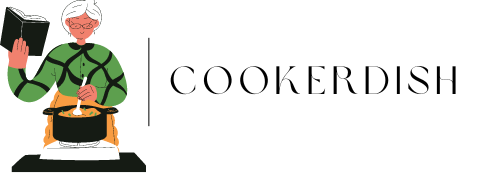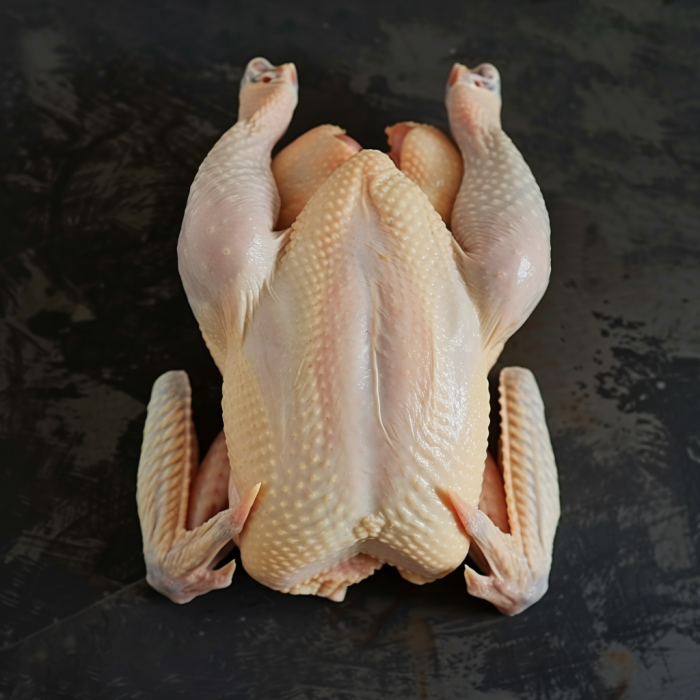Boiling a whole chicken is a versatile cooking method that provides tender, juicy meat and rich, flavorful broth. Whether you’re making a hearty chicken soup, preparing shredded chicken for various recipes, or just want to enjoy a wholesome, nutritious meal, knowing how long to boil a whole chicken is essential. In this guide, we’ll cover everything from preparation and cooking times to storage tips and common mistakes to avoid. Let’s dive in and learn the best way to boil a whole chicken!
Introduction
Introduction
Boiling a whole chicken is a simple yet effective way to cook this versatile protein. It’s a method loved by home cooks and chefs alike for its ease and the tender, flavorful results it yields. Plus, it’s economical and perfect for meal prepping.
When you boil a whole chicken, you not only get moist, succulent meat but also a nutritious broth that can be used in soups, stews, and sauces. This article will guide you through the entire process, ensuring you get the perfect boiled chicken every time.
Cooking a whole chicken by boiling it might sound old-fashioned, but it’s incredibly practical. The meat becomes tender and juicy, perfect for shredding and using in various dishes. Moreover, the broth you get from boiling the chicken is packed with flavor and nutrients, making it an excellent base for other recipes. Check out this guide to deliciously simple slow cooker lime cilantro chicken recipe for another versatile chicken dish.
We’ll explore everything from selecting the right chicken to the specifics of boiling times and tips for achieving the best results. Whether you’re a novice cook or an experienced one looking for a refresher, this comprehensive guide will help you master the art of boiling a whole chicken. So, without further ado, let’s get started on this culinary journey!
Preparing to Boil a Whole Chicken
Selecting the Chicken
Choosing the right chicken is the first step towards a delicious boiled chicken. Ideally, you’ll want to select a chicken that’s between 3 to 4 pounds. This size is perfect for boiling as it cooks evenly and fits well in most pots.
When deciding between fresh and frozen chickens, both have their advantages. Fresh chickens are often preferred for their superior flavor and texture. They require less preparation time since they don’t need to be thawed. However, frozen chickens are convenient and have a longer shelf life. If using a frozen chicken, remember to adjust the boiling time accordingly to ensure it’s fully cooked.
Ingredients Needed
To boil a whole chicken, gather the following ingredients:
- Whole chicken (3-4 pounds)
- Water (enough to fully submerge the chicken)
- Vegetables (such as carrots, celery, onions)
- Herbs and spices (bay leaves, peppercorns, garlic)
These ingredients not only enhance the taste of the chicken but also make the broth rich and savory. For more tips on flavorful cooking, see this guide to the ultimate mango habanero sauce.
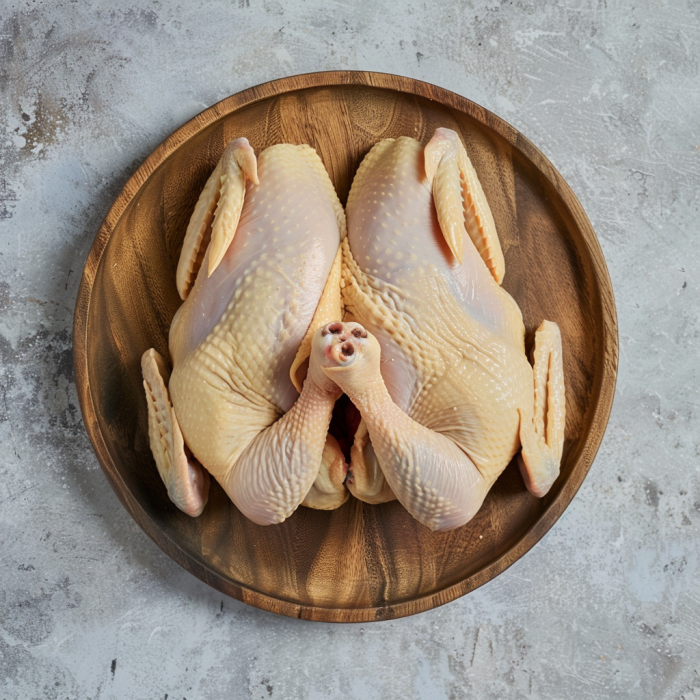
Equipment Needed
Having the right equipment is essential for a smooth cooking process:
- Large pot with a lid: Ensure it’s big enough to hold the chicken and enough water to cover it completely.
- Meat thermometer: Meat thermometer: This is crucial for checking if the chicken is cooked thoroughly. For more information, refer to the USDA’s guidelines on safe cooking temperatures.
- Skimmer or slotted spoon: Useful for removing any foam or impurities that rise to the surface during boiling.
- Cutting board and knife: For preparing vegetables and carving the cooked chicken.
With your ingredients and equipment ready, you’re all set to start boiling your whole chicken. Ensuring you have everything on hand makes the process seamless and enjoyable.
Part 3: Boiling Process
How to Boil a Whole Chicken
Boiling a whole chicken might seem straightforward, but following the right steps ensures you get the best results. Here’s a detailed, step-by-step guide to help you achieve perfectly boiled chicken every time.
- Prepare the Pot: Begin by filling a large pot with enough water to fully submerge your chicken. Adding vegetables like carrots, celery, and onions, along with herbs and spices such as bay leaves, peppercorns, and garlic, enhances the flavor of both the chicken and the broth.
- Bringing Water to a Boil: Place the pot on the stove and turn the heat to high. Wait until the water reaches a rolling boil. This initial high heat helps to quickly bring the water up to temperature, ensuring that your chicken starts cooking right away.
- Adding the Chicken: Carefully place the whole chicken into the boiling water. If the chicken is fresh, you can add it directly. If frozen, ensure it is fully thawed before boiling to maintain even cooking.
- Adjusting the Heat: Once the chicken is in the pot, reduce the heat to medium-low. This gentle simmering is crucial as it allows the chicken to cook evenly without becoming tough. A vigorous boil can lead to dry, overcooked meat, whereas a simmer keeps the chicken tender and juicy.
- Skimming the Foam: As the chicken cooks, you’ll notice foam rising to the surface. Use a skimmer or slotted spoon to remove this foam. It helps keep the broth clear and enhances the final presentation of your dish.
- Monitoring the Chicken: Keep an eye on the chicken as it boils. Ensure that the water level remains above the chicken, adding more if necessary. Stir occasionally to prevent sticking and to ensure even cooking.
Using these steps, you can boil a chicken that’s flavorful and moist, perfect for any dish you’re preparing.
Cooking Times Based on Chicken Size
The boiling time for a whole chicken varies based on its weight and whether it’s fresh or frozen. Here are some general guidelines to help you determine the correct boiling times.
- Defrosted Chicken:
- 3-4 pounds: Boil for about 1.5 hours.
- Over 4 pounds: Add an additional 15 minutes per pound.
- Frozen Chicken:
- 3-4 pounds: Boil for about 1 hour and 45 minutes.
- Over 4 pounds: Add 20-25 minutes per pound.
To ensure your chicken is cooked properly, use a meat thermometer. Insert it into the thickest part of the chicken, typically the thigh, without touching the bone. The internal temperature should reach 165°F (75°C). This ensures the chicken is fully cooked and safe to eat.
These times are guidelines, and actual cooking times may vary depending on your stove and pot size. Always check for doneness with a thermometer to avoid any guesswork.
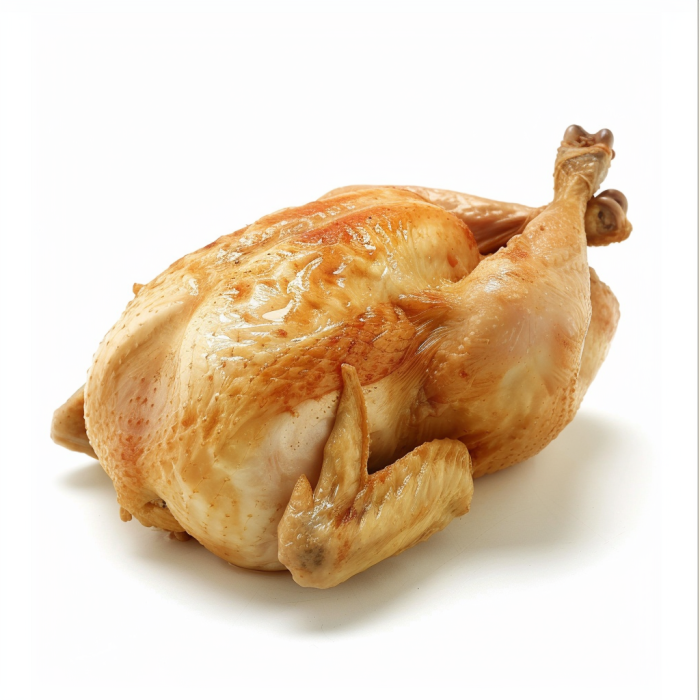
Tips for Perfect Boiled Chicken
Achieving the perfect boiled chicken involves a few key tips to ensure tenderness and flavor:
- Don’t Overcrowd the Pot: Make sure the chicken has enough space to move slightly in the pot. Overcrowding can lead to uneven cooking.
- Season Generously: Don’t skimp on the herbs and spices. They infuse the chicken with flavor and make the broth deliciously aromatic.
- Maintain a Gentle Simmer: Avoid boiling the water vigorously. A gentle simmer cooks the chicken evenly and keeps it tender. Rapid boiling can make the meat tough.
- Check for Doneness: Use a meat thermometer to ensure the chicken is cooked to the right temperature. This is the best way to avoid overcooking or undercooking.
- Rest the Chicken: After boiling, let the chicken rest for a few minutes before carving. This allows the juices to redistribute, making the meat more succulent.
By following these tips, you can ensure that your boiled chicken is tender, juicy, and full of flavor every time.
Uses for Boiled Chicken
Shredding and Storing Boiled Chicken
Boiling a whole chicken not only gives you tender meat but also opens up a world of culinary possibilities. Here’s how to shred and store your boiled chicken effectively.
How to Shred Boiled Chicken:
- Cool the Chicken: Once the chicken is fully cooked, remove it from the pot and let it cool slightly. This makes handling easier and safer.
- Remove the Skin and Bones: If you haven’t already, remove the skin and bones. This step is crucial for achieving a smooth, consistent shred.
- Shred the Meat: Use two forks to pull the meat apart. Alternatively, you can use your hands or a hand mixer for faster shredding. Pull the meat into bite-sized pieces suitable for various dishes.
Storage Tips:
- Refrigeration: Place the shredded chicken in airtight containers and store it in the fridge. It can last for up to four days.
- Freezing: For longer storage, portion the shredded chicken into freezer bags or containers. Label them with the date and freeze for up to three months. To use, simply thaw in the refrigerator overnight.
Proper shredding and storage ensure that you always have ready-to-use chicken for quick meals and snacks.
Using Boiled Chicken in Recipes
Boiled chicken is incredibly versatile and can be used in a variety of dishes, making meal prep a breeze. Here are some delicious recipe ideas:
Chicken Salads:
- Classic Chicken Salad: Combine shredded chicken with mayonnaise, diced celery, and onions. Season with salt, pepper, and a squeeze of lemon juice.
- Avocado Chicken Salad: Mix shredded chicken with mashed avocado, chopped cilantro, and lime juice for a creamy, healthy salad.
Chicken Soups:
- Chicken Noodle Soup: Use the rich broth from boiling the chicken. Add noodles, carrots, and celery for a comforting, hearty soup.
- Chicken Tortilla Soup: Combine shredded chicken with tomatoes, corn, black beans, and spices. Serve with tortilla strips and a squeeze of lime.
Sandwiches and Wraps:
- Chicken Sandwich: Layer shredded chicken with lettuce, tomato, and your favorite condiments on whole grain bread.
- Chicken Wraps: Roll shredded chicken, lettuce, shredded cheese, and a dollop of sour cream in a tortilla for a quick and tasty meal.
Using boiled chicken in these recipes not only saves time but also adds a protein-packed component to your meals. Enjoy the convenience and flavor that boiled chicken brings to your kitchen!
Additional Tips and Information
Nutritional Benefits of Boiled Chicken
Boiled chicken is not only delicious but also a nutritional powerhouse. It’s a lean source of protein, making it ideal for muscle building and repair. Low in fat, especially if you remove the skin before boiling, it’s a heart-healthy choice for those watching their cholesterol and fat intake.
Moreover, boiled chicken is rich in essential vitamins and minerals. It provides significant amounts of B vitamins (like niacin, B6, and B12) which are crucial for energy production and maintaining a healthy metabolism. The mineral content, including phosphorus and selenium, supports bone health and immune function.
The broth from boiled chicken is equally valuable. It contains collagen and gelatin, which are beneficial for joint health and digestion. The minerals leach into the broth during cooking, creating a nutrient-dense liquid that can enhance the nutritional value of soups and stews.
Common Mistakes to Avoid
Even though boiling chicken is straightforward, there are common pitfalls that can affect the quality of your dish. Here’s what to watch out for:
Overcooking or Undercooking: Always use a meat thermometer to ensure your chicken is cooked perfectly. The internal temperature should reach 165°F (75°C). Overcooked chicken can become tough and dry, while undercooked chicken poses a risk of foodborne illness.
Not Seasoning Properly: Don’t skimp on seasoning. Adding herbs, spices, and aromatic vegetables not only flavors the chicken but also enriches the broth. Be generous with salt, pepper, bay leaves, and garlic to avoid a bland outcome.
Boiling Too Vigorously: Keep the heat at a gentle simmer. Boiling too vigorously can make the meat tough and dry. A gentle simmer allows the chicken to cook evenly and remain tender. It also helps in extracting maximum flavor for the broth.
By avoiding these common mistakes, you’ll ensure that your boiled chicken is tender, flavorful, and nutritious every time.
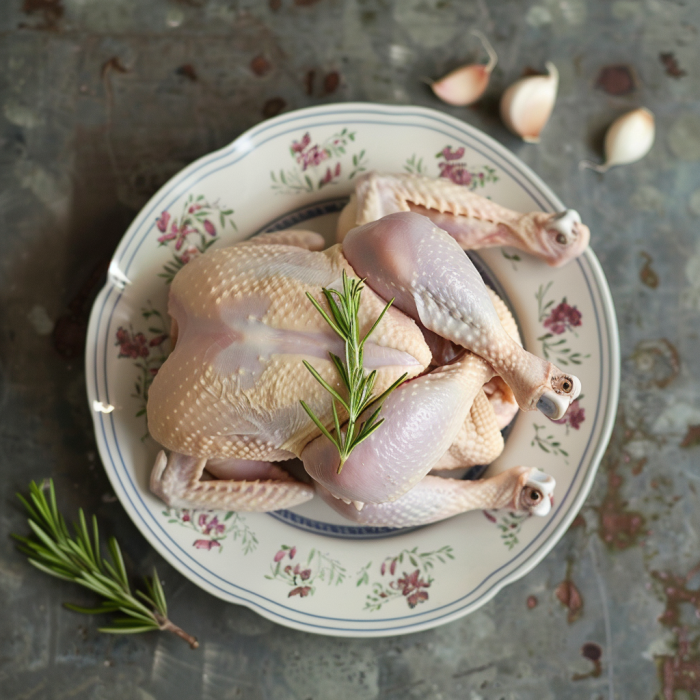
FAQs
Frequently Asked Questions
Here are answers to some common questions about boiling whole chickens:
How long to boil a whole chicken for soup?
For a 3-4 pound chicken, boil for about 1.5 hours for a rich and flavorful soup. This time allows the chicken to cook thoroughly and infuse the broth with deep, savory flavors.
Can you boil a frozen whole chicken?
Yes, you can boil a frozen whole chicken, but you’ll need to add 20-25 minutes per pound to the boiling time. This ensures that the chicken cooks evenly and reaches a safe internal temperature.
How do you know when the chicken is done?
To determine if the chicken is done, use a meat thermometer. Insert it into the thickest part of the chicken, typically the thigh, without touching the bone. The internal temperature should reach 165°F (75°C). This guarantees the chicken is fully cooked and safe to eat.
Can you boil a whole chicken without skin?
Yes, boiling a skinless chicken works well and is often preferred for a lower-fat option. Without the skin, the chicken still becomes tender and juicy, and the broth remains flavorful.
What can you do with the leftover broth?
The leftover broth can be used in a variety of ways. It’s excellent for making soups, stews, and sauces. You can also use it as a base for cooking grains like rice or quinoa, enhancing their flavor with the rich, savory taste of the chicken broth.
Conclusion
In conclusion, boiling a whole chicken is an easy and effective way to prepare a versatile, nutritious meal. Whether you use the meat in salads, sandwiches, or soups, or enjoy the rich broth on its own, this method is sure to become a staple in your kitchen. The simplicity of boiling allows the natural flavors of the chicken to shine, while also providing a healthy, protein-packed option for your meals.
So, grab a pot and start boiling! With the right ingredients, equipment, and a bit of patience, you’ll master the art of boiling a whole chicken and enjoy its numerous culinary benefits. Happy cooking!
